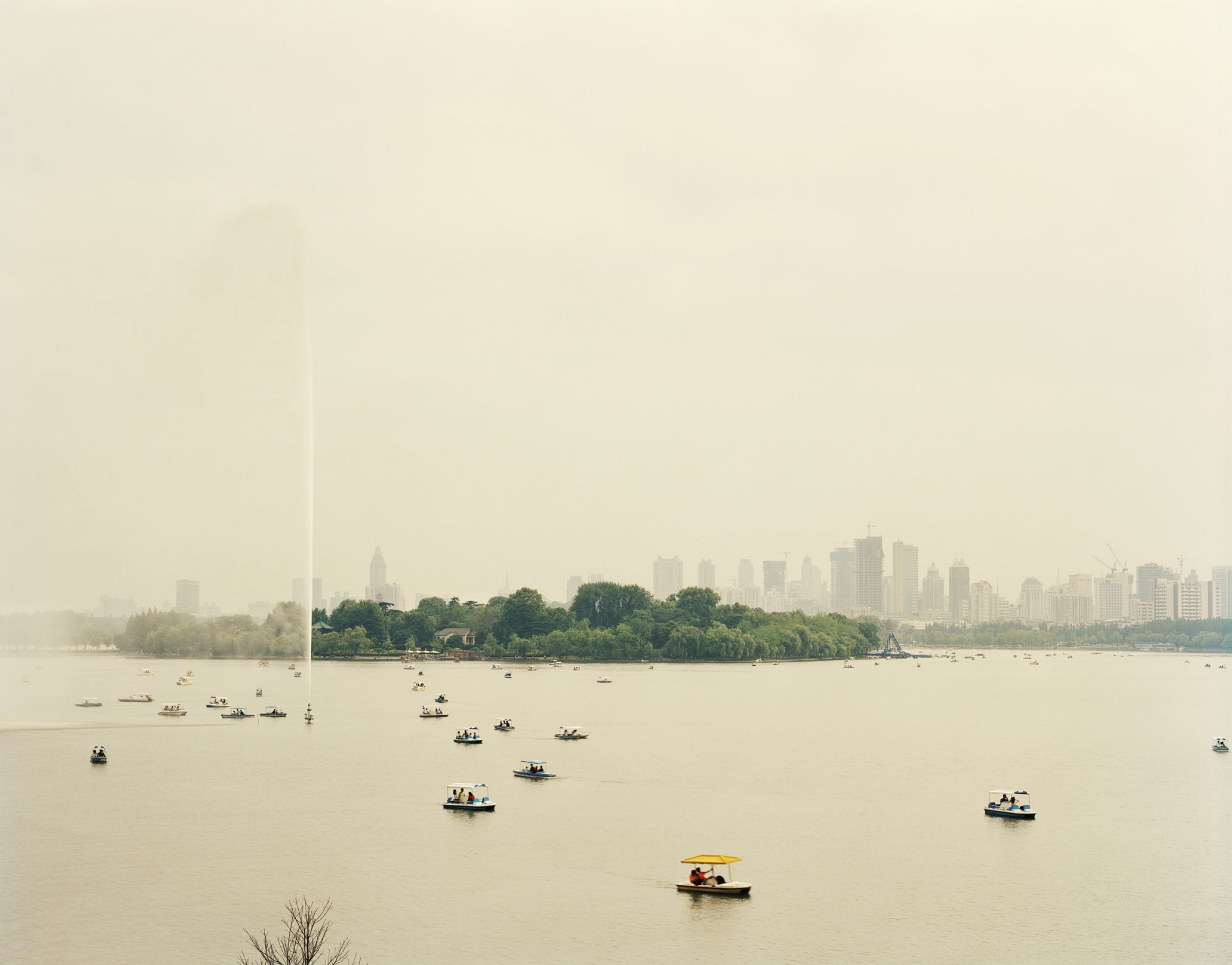 Yibin I (Bathers), Sichuan Province, 2007
Yibin I (Bathers), Sichuan Province, 2007
 Yibin I (Bathers), Sichuan Province, 2007
Yibin I (Bathers), Sichuan Province, 2007
 Pudong I, Shanghai, 2007
Pudong I, Shanghai, 2007
 Shanghai I, 2006
Shanghai I, 2006
 Nanjing V, Jiangsu Province, 2007
Nanjing V, Jiangsu Province, 2007
Nadav KanderYangtze, The Long River
2006–2007
And as I stood again and again looking at the water flowing past, I would wonder if the water that I was watching was water I had seen on previous trips having flowed to the ocean, evaporated, become a cloud and fallen as rain. All things cyclical. Nothing lost.
The Yangtze River, the main artery of this body of work and of China, flows over 6,500 kilometres (4,100 miles) from the country’s most westerly point in Qinghai Province through both the most sparsely and densely populated regions, to Shanghai in the east. With the river as a metaphor for constant change, I photographed the landscape and people along its banks from mouth to source. I worked intuitively, trying not to be influenced by what I already knew about China. I wanted to respond to what I found and felt. Although unconscious, it seems no coincidence that I travelled up river, against the current.
More people live along the Yangtze’s banks than in the whole of the United States: that is one in every eighteen people on the planet. It is the single largest pollutant to the Pacific Ocean. This extraordinary and vast river is embedded in the consciousness of the Chinese. It is much more than a waterway. It contains their history and their folklore. It runs in the blood of the people. This river caught my imagination and carried me on my journey.
My own feelings of rootlessness as an Israeli-born South African living in England evoked a strong response as I witnessed the vast scale of change under way in China. The west, and often the worst of it, is mirrored in China’s development and in that I saw a reflection of all mankind. The mistakes we have all made are being repeated. I realised that, for me, this project was about us all, about our interrelatedness, and not just about China.A formalness and unease began to permeate my pictures after several trips to different parts of the river. I was responding to this country that feels both at the beginning of a new era and at odds with itself. I felt like a complete outsider and explained this pictorially by ‘stepping back’ – by showing humans as small in their surroundings. Common man has little say in China’s progression and this smallness of the individual is alluded to in the work. I found resonances in John Martin’s and Casper David Friedrich’s paintings, where humans are dwarfed against the might of nature and God, and J. M. W. Turner’s paintings, where tiny figures are lost in the seething violence of nature suggesting the ultimate defeat of all endeavour, the fallacy of hope. I felt the smallness of man pitted against huge ideas, the insignificance of man compared to the state.
Although it was never my intention to make documentary pictures, the sociological context of this project is ever present and unavoidable. The displacement of 1.7 million people in a 600-kilometre (380-mile) stretch of the river and the effect on humans when a country moves towards the future at unprecedented speed are themes that inevitably figure within the work.
China is a nation that appears to be severing its roots by destroying its past. Demolition and construction were everywhere on such a scale that I was unsure if what I was seeing was being built or destroyed, destroyed or built.
I felt strong parallels with the twentieth-century immigrants, who poured off the boats onto American soil for a new beginning without roots. And yet, paradoxically, the Chinese have traditionally had a deep identification with their native soil and an attachment to place. How can one be so rooted to the land and yet so ruthlessly redevelop or reinvent it?China’s progress is rapid and profound. These are photographs that can never be taken again.
#NadavKander #Yangtze #China #photography #atlas #places #atlasofplaces
There are no comments yet.